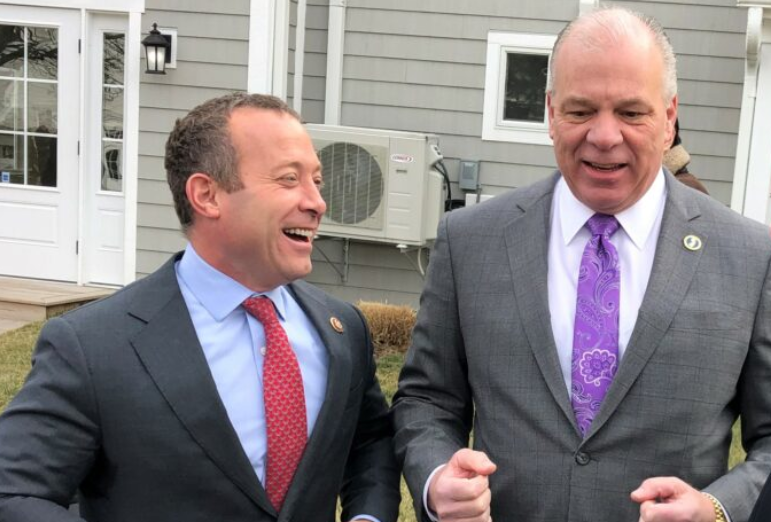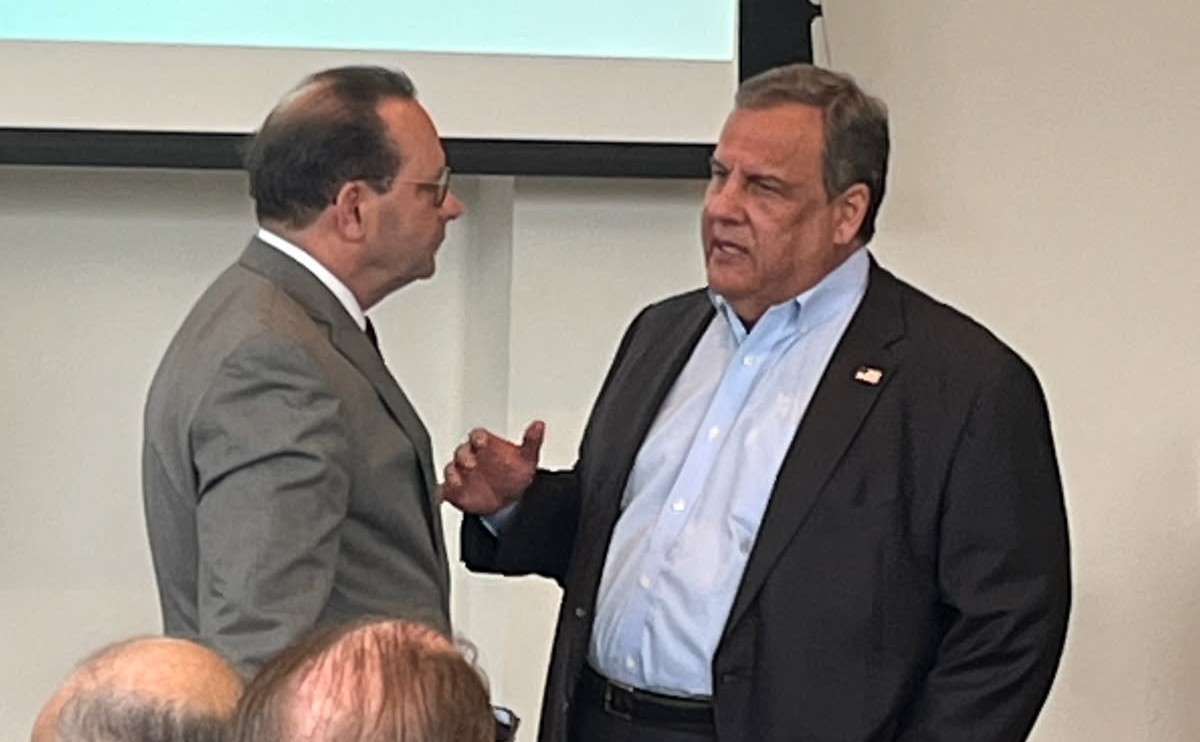SOMERVILLE – Everybody loves a fighter until they get punched in the nose, then they wish the world

was more peaceful. That’s a variation on something Mike Tyson said once and, it seems, applicable in these truncated and dumbed-down times where six contenders in the Democratic Primary want the voters to know that they will knock someone’s block off “for you.”
The “fighter” role for the politician has always mystified Republican gubernatorial candidate state

Senator Jon Bramnick (R-21) who believes in the subtle arts of government and politics as the antidote to fighting, and the metaphor itself but a crude misapplication. Maybe that’s why Bramnick is persona non grata with the MAGA crowd, as his rivals “fight” to occupy the New Jersey pedestal of Trump World.
But back to the Democrats and the challenge of their particular muscular circular firing squad ahead of the June 10th Primary, bemoaned here by Joey Novick in his column today for InsiderNJ.
Pollster Patrick Murray, who used to run Monmouth University’s Polling site and now heads the StimSight Research center, says the candidate who wins the primary in the crowded six-person race could conceivably win with 200,000 votes. They know that and so have in their sights very specific voters, and the very specific passions and emotions of those voters.
“It can swing very suddenly if one candidate catches fire,” Murray told InsiderNJ. “It’s difficult to say

which candidate is doing the best. The thing that is the key is the undecided voter and what the candidates are doing is trying to reach that undecided voter by saying, ‘I’ve got something more specific for you that speaks more to your concerns and the qualities you want in a fighter.”
To that point, Jersey City Mayor Steven Fulop over the weekend released a video of himself and U.S. Rep. Mikie Sherrill addressing women’s healthcare at a candidates’ forum. Sherrill speaks generally, while Fulop speaks specifically, and the latter – without coming out and overtly saying it – seems to make the case that his detail-oriented convictions about women’s health speak to his superior fighting fitness for the job.
In the ads she released in this competitive political season, Sherrill has appeared more than twice in a flight suit with a helicopter in the background. A Navy veteran, she’s fought for you her whole life, she looks into the camera and says, so she is better suited to keep fighting, even if she may be short on details at the moment.
That seems to be the gist.
“Sherrill’s messaging is that her biographical military service makes her a fighter,” said Murray.
So, how’s it playing?
Well, not well, according to former state Senate President Steve Sweeney (D-3), who keeps hitting Sherrill, most frequently on the subject of her husband’s finances and money the congresswoman received from Elon Musk, which Sweeney demands she return.
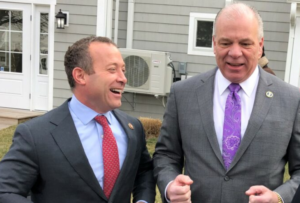
Now, Sweeney – who partnered with Republican Governor Chris Christie to overhaul public pension benefits – is mostly dead to progressives, so if he can keep Sherrill on the defensive, perhaps the two biggest and overt progressives in the contest – Fulop and Newark Mayor Ras Baraka (pictured, top, masked in the throes of the COVID crisis) – can do their part in dividing the primary vote and give the South Jersey ironworker his lone shot of amassing Building Trades Labor, the state’s southern region and – maybe – seniors, or a swathe of them, anyway.
Running a smart and organized campaign where he has snapped up a lot of injured Democratic Primary parties around the state – everyone from progressive people who have fought their backyard machines, former lawmakers jettisoned into oblivion, and assorted suburban progressive jumper up and downers, Fulop also has policy chops probably second only to Sweeney, the former perennial Trentonian.
His biggest barrier to victory is probably Baraka, who has more of an urban focus, but is likewise operating on the far-left bank – to paraphrase George W. Bush – of their party.
According to one source, who spoke to InsiderNJ on condition of anonymity, “Baraka reflects my heart. But Fulop would be the better Governor.”
Here’s the kicker:
“They are very different from the rest.”
As in, the rest of the Democratic Party Primary field.
But how does the source size them up?
“Baraka will not have the same animosity from some legislators. He will be the best on healthcare. Fulop is a brilliant guy policy wise. He will build mass transit. He will deliver services better. He will get his arms around state government.”
The source added: “I think they both take away from Mikie and, yes, I think they do cancel out some of the progressive base.”
Advantage: Sweeney.
But then again, Sweeney has to worry about U.S. Rep. Josh Gottheimer (D-5), the consummate moderate, whose affordability message sounds similar to the former senate president’s.
Here’s the bottom line:
At this moment in time, Baraka and Fulop continue to demonstrate the most consistent progressive energy.
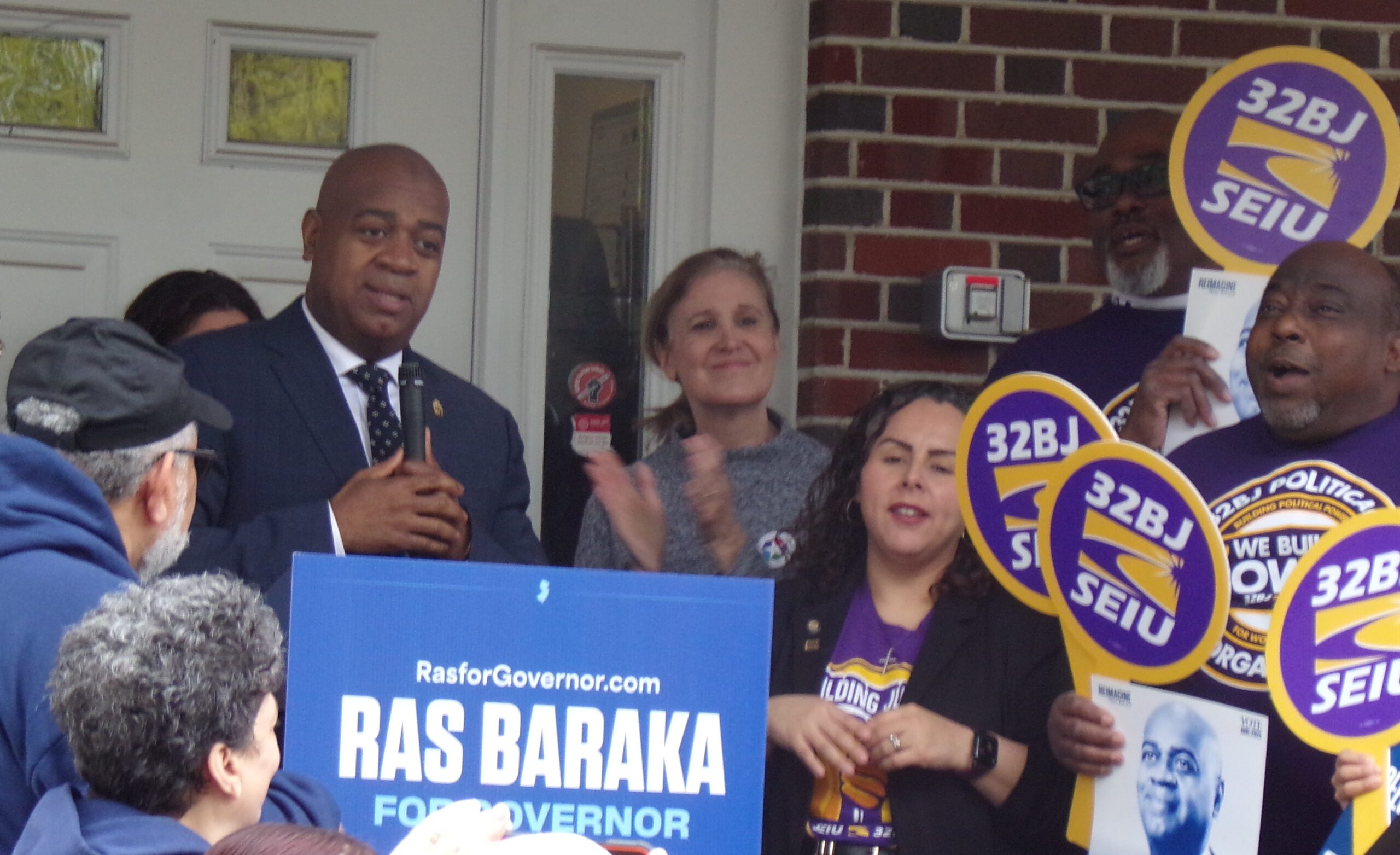
Consider the following question: “Each of the Democratic Party candidates for governor is trying to position him/herself as a fighter. On the record, in your judgment, who do you see fighting the hardest for your specific labor cause?”
Said Ray Greaves, Amalgamated Transit Union International Vice President, “No question, it’s Steve Fulop. Fulop has a plan to fix mass transit, and he lays that plan out in his transit policy, with substantial input from the ATU. Also, he’s been the first in many worker initiatives, such as paid family leave, minimum wage, and on and on.”
“They’re both going for the liberal wing of the party,” Murray said of Fulop and Baraka. “Fulop has put more attention intro the suburban portion with his assembly slates. These liberal votes exist everywhere, whereas Baraka much more directly projects as a progressive fighter on issues related to poverty, justice, and economic opportunity, those kinds of things. Fulop is more keyed into issues related to progressive culture and identity, but both Fulop and Baraka are demonstrating candidacies shaped by that kind of voter on the left looking for a fighter.
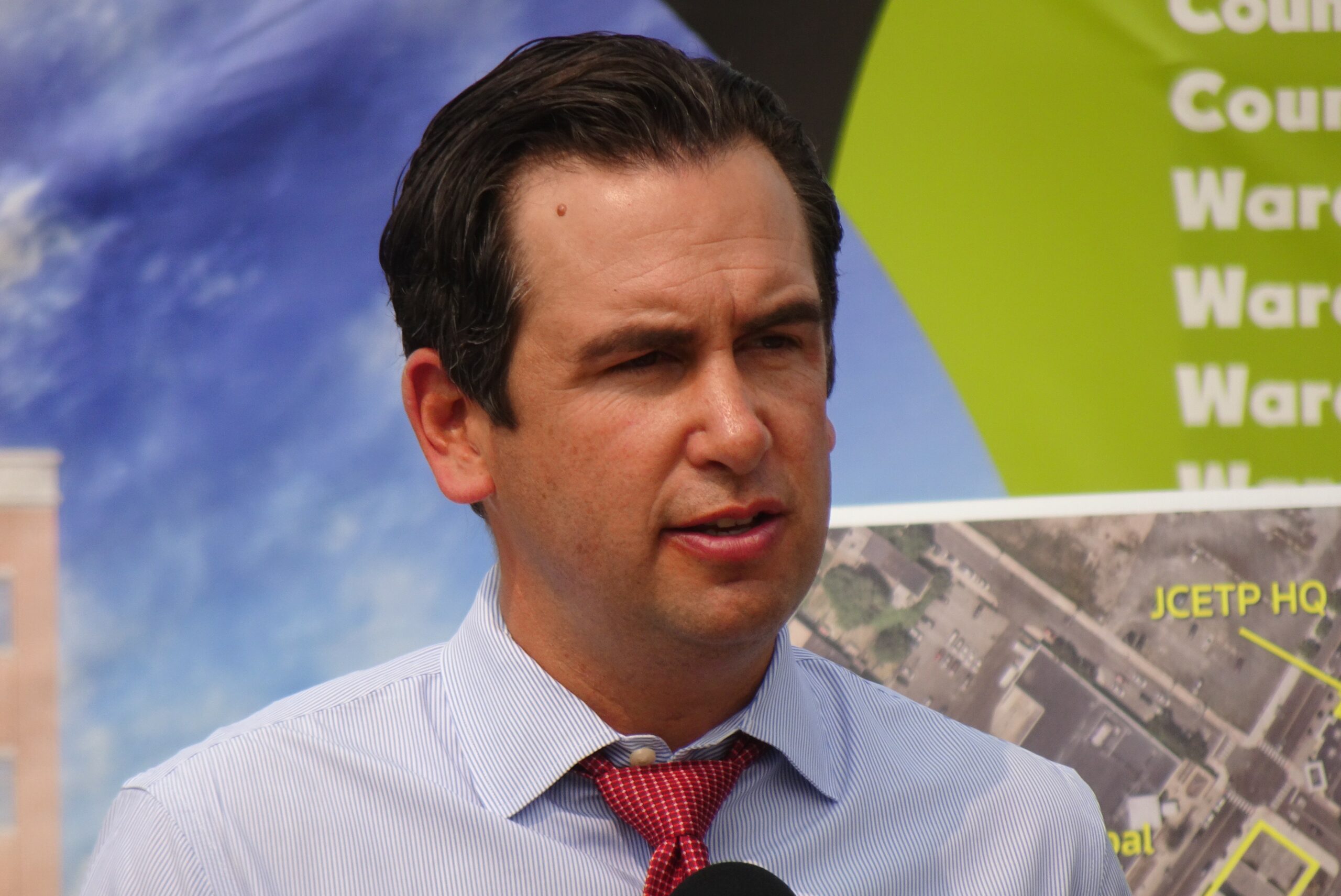
“The problem is everybody has to be a fighter, and there are slight differences, in a primary where all these candidates are not high on the radar screen of potential Democratic voters,” Murray added.
Turnout will be abysmal, he expects.
“The most compelling messenger is Baraka,” Murray noted. “He’s the one audiences respond to the most. He seems to be resonating because he’s willing to take on the issues of the left. Fulop certainly looks structurally to understand the challenge of this particular primary. I’m not sure yet whether he’s actually executed that. We’ll see. Sweeney is the most specific on the issues because he’s dealt with them the longest. He doesn’t speak eloquently but he can speak authoritatively.”
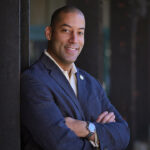
Finally, Sherrill remains the frontrunner because of those conventional party organizations backing her with their backs to the wall and their necks on the chopping block, organizations that the others would just as readily accept but for her having fought for them and secured them.
The right fight?
“I think they are all misreading the public’s disgust with back room deals,” opined a Democratic Party source, who admitted Sherrill could still win, in a tough race. For all the aforementioned players, moreover, “the spoiler is really [New Jersey Education Association President Sean] Spiller, if he is successful in carrying all the teachers,” said the source, adding, admittedly, “A big if.”
When it comes to being in a physical altercation, projecting toughness can be a key factor in deterring potential attackers and gaining the upper hand in a fight. In New Jersey, where self-defense laws can be strict, it is important to know how to project toughness without escalating the situation unnecessarily. Here are some strategies for projecting toughness in a fight, as shared by insiders in the self-defense community in New Jersey.
1. Maintain strong body language: One of the most effective ways to project toughness in a fight is through your body language. Stand tall, with your shoulders back and your chin up. Make eye contact with your opponent and avoid fidgeting or looking nervous. This will show that you are confident and in control of the situation.
2. Use assertive verbal cues: In addition to your body language, using assertive verbal cues can also help to project toughness. Speak in a firm and confident tone, and use clear and concise language to communicate your intentions. Avoid using aggressive or threatening language, as this can escalate the situation and potentially lead to legal consequences.
3. Stay calm and composed: In a fight, it is easy to let your emotions get the best of you. However, staying calm and composed can help you think more clearly and make better decisions. Take deep breaths and focus on controlling your emotions, even if you feel scared or angry. This will show your opponent that you are in control of yourself and the situation.
4. Use non-verbal cues: In addition to body language and verbal cues, using non-verbal cues can also help to project toughness in a fight. Make use of your surroundings, such as standing with your back against a wall or positioning yourself in a way that makes it difficult for your opponent to approach you. This will show that you are aware of your surroundings and prepared to defend yourself if necessary.
5. Seek professional training: Finally, one of the best ways to project toughness in a fight is to seek professional training in self-defense techniques. In New Jersey, there are many reputable self-defense schools and instructors who can teach you how to defend yourself effectively and project toughness in a fight. By learning from experts in the field, you can gain the skills and confidence needed to protect yourself in any situation.
In conclusion, projecting toughness in a fight is essential for deterring potential attackers and gaining the upper hand in a physical altercation. By maintaining strong body language, using assertive verbal cues, staying calm and composed, using non-verbal cues, and seeking professional training, you can effectively project toughness and defend yourself in any situation. Remember to always prioritize your safety and well-being, and never hesitate to seek help if you feel threatened or unsafe.

